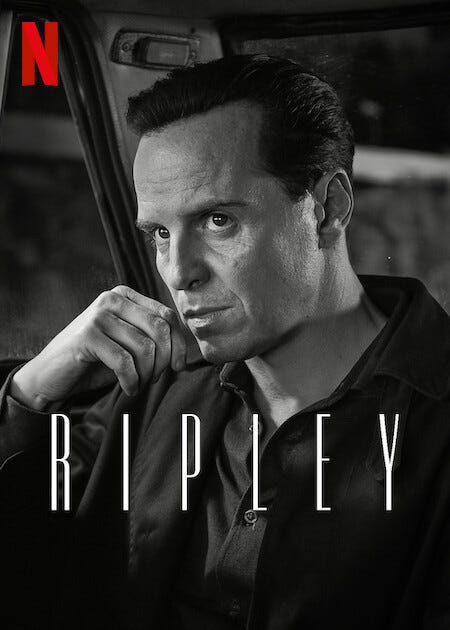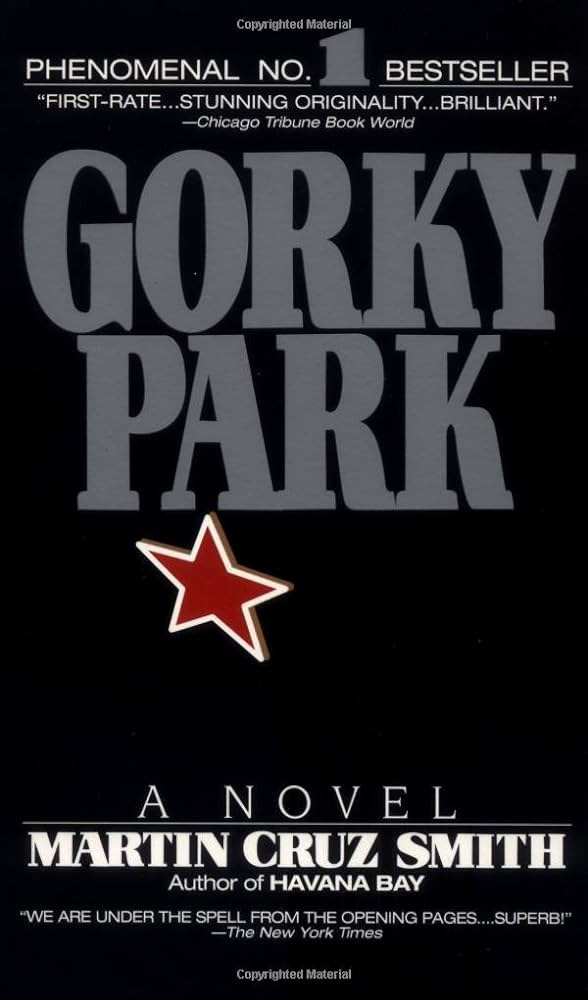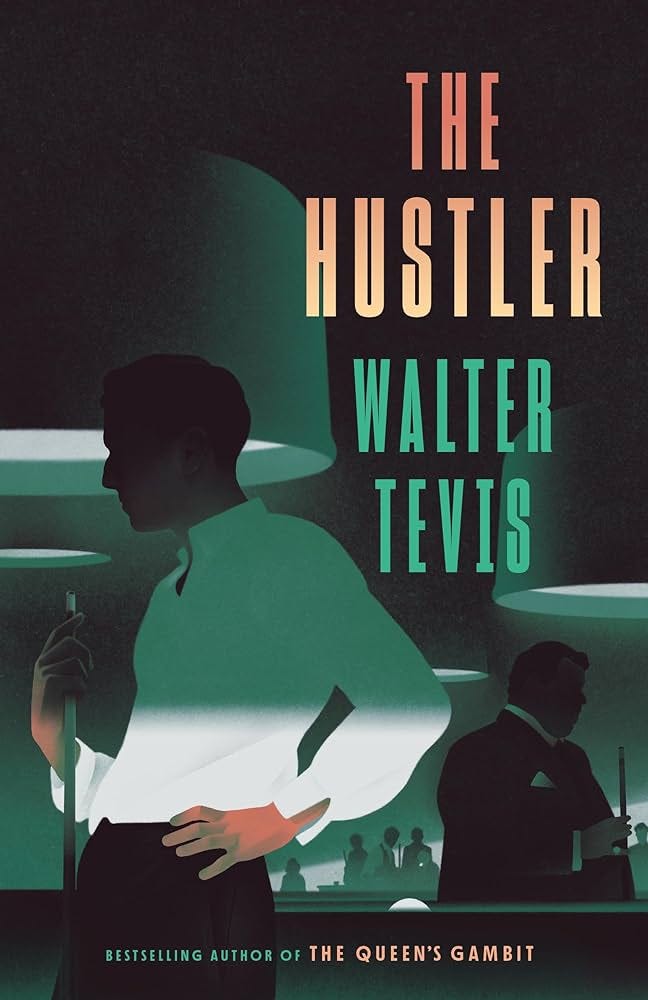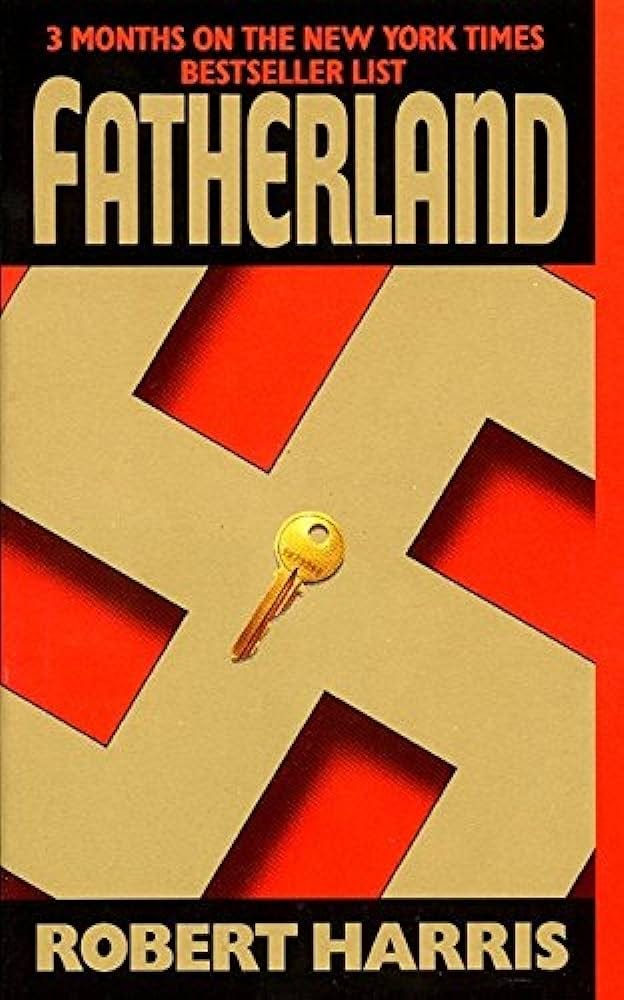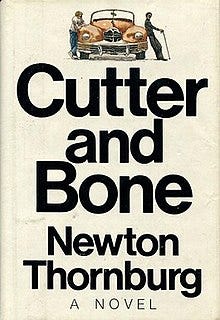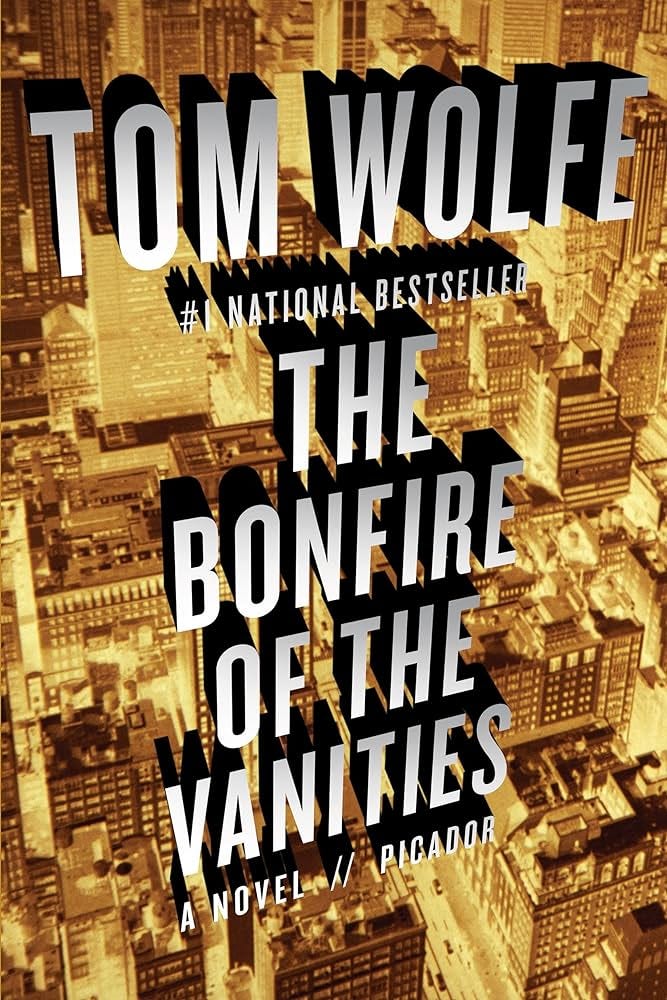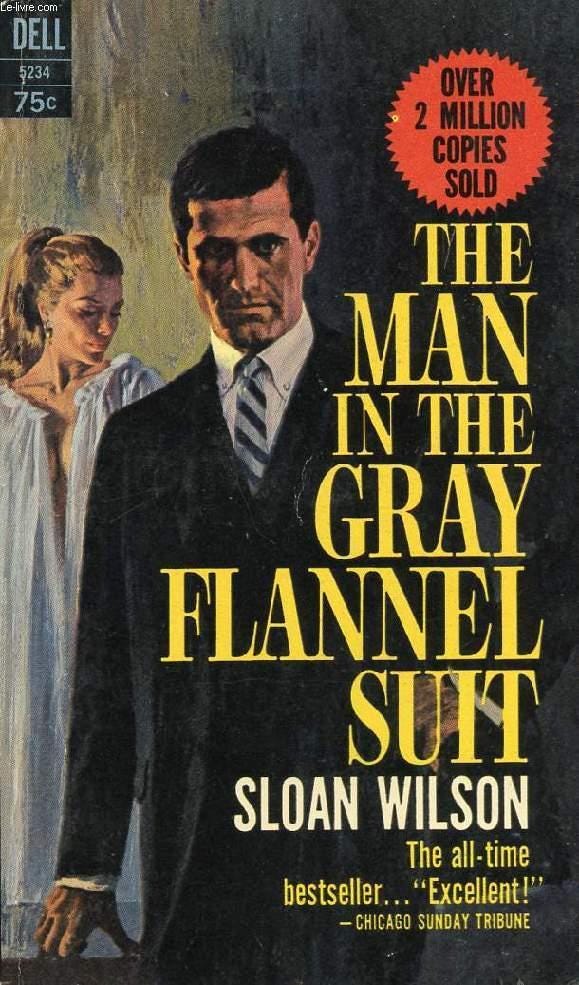A GOLDEN AGE OF THE TV MINISERIES
The second half of the twentieth century was a sort of Golden Age for popular fiction in English. Some of the best pop fictions of the era – The Godfather, The Exorcist, Jaws, etc. – were adapted by Hollywood into films that were as good, or even better, than their source materials. But it was the rare popular novel that was adapted well by filmmakers. Most films made from novels must, of necessity, leave out a great deal of the novelist’s material. To address this problem, Hollywood producers, in the 1970s, invented the TV miniseries. This allowed studios to adapt fairly long novels such as Arthur Haley’s Roots, Irwin Shaw’s Rich Man Poor Man, Colleen McCullough’s The Thorn Birds, James Clavell’s Shogun, and Leon Uris’s QBVII into what were essentially multi-part TV movies. The problem, however, was that, although TV producers were capable of making longer works than their filmmaking brethren, they were handcuffed by the fairly rigid network broadcasting standards of the 1970s, which proscribed much of what made those books popular in the first place, including sex, violence, nudity, harsh language, and gore. And both TV producers and filmmakers were handicapped by the technology available to them at the time, which meant that a miniseries like NBC’s Shogun, which first aired in 1980, had to try to recreate Sengoku-era Japan entirely on soundstages and/or actual contemporary locations. They didn’t have access to the kind of computer-graphics technology that has made FX’s recent Shogun miniseries a much more realistic and visually sumptuous product than the 1980 original.
Lately, we seem to have entered a Golden Age of the TV miniseries. Suddenly, novels that were once severely abridged during their original transition to the screen – Patricia Highsmith’s The Talented Mr. Ripley, Paul Theroux’s The Mosquito Coast, etc. – are being given the running time necessary to bring their full stories to life on various TV streaming services. I happen to be a fan of Anthony Minghella’s 1999 film The Talented Mr. Ripley, but I believe that Stephen Zaillian’s recent eight-part miniseries, Ripley, captures much more of the tone and spirit and plot of Highsmith’s book than Minghella’s film did. Zaillian’s primary advantage over Minghella is simply time. Netflix gave Zaillian the ability to turn a 250-page novel into eight episodes, with an average running time of about an hour each. Minghella’s film had a running time of about two hours and twenty minutes, which was actually quite long for a Hollywood film of its era, but is not even a third the length of Zaillian’s miniseries.
Now that Hollywood seems poised to turn a lot more classic popular fictions into miniseries, I’d like to recommend a few books that strike me as long overdue for such treatment.
Ghost Story by Peter Straub. This classic 1979 horror novel ran to 483 pages in hardback, nearly twice the length of Highsmith’s first Ripley novel. But John Irvin’s 1981 movie version, which provided Fred Astaire and Douglas Fairbanks Jr. with their final film roles, ran for only an hour and fifty minutes, about half an hour shorter than Minghella’s Ripley adaptation. What’s more, Minghella’s film, which earned multiple Academy Award, Golden Globe, and BAFTA nominations and collected three times its production costs at the box office, was both a commercial and a critical success, with an 85-percent approval rating on the Rotten Tomatoes review-aggregating website. Ghost Story was only modestly successful at the box office and has a Rotten Tomatoes approval rating of 29 percent. This is a property that screams out for the big-budget miniseries treatment that has already been afforded to Shogun, Ripley, The Right Stuff, and other popular books that were first adapted by Hollywood in the late twentieth century. In addition to truncating the plot of Straub’s novel, Irvin, a Brit, intentionally brought a British look and feel to a novel that is as American as apple pie and school shootings. In Danse Macabre, Stephen King quotes Straub as saying that Ghost Story “started as a result of my having just read all the American supernatural fiction I could find. I reread Hawthorne and James, and went out and got all of Lovecraft and a lot of books by his ‘set’ – this was because I wanted to find out what my tradition was, since I was by then pretty firmly in the field…” According to Wikipedia, “Irvin, who was a newcomer in Hollywood, hired several British film makers as part of his team and stated that the film’s cinematography was intended to be ‘European’ in appearance and to look like a Christmas card.” Irvin’s film isn’t awful but it doesn’t come close to capturing the richness of mood and setting found in Straub’s novel.
Gorky Park by Martin Cruz Smith. Smith was a bit of a hack before Gorky Park, the fifth bestselling novel of 1981, put him on the American literary map. Much of his early fiction was written fast and pseudonymously for various pulp publishers of men’s action tales. In 1974 and 1975 alone he authored six books in the Inquisitor series of action novels, all of them under the pseudonym Simon Quinn. He also wrote Westerns under the name of Jake Logan (a publishing-house pseudonym used by plenty of other writers) and thrillers under the name of Nick Carter (ditto). But he spent eight years researching and writing Gorky Park and the effort paid off. The novel is one of the highlights of twentieth-century American crime fiction, even though its protagonist is Russian and the novel is set mostly in Moscow. It’s difficult to overstate just how brilliant Cruz’s novel is. The hardback was blurbed not by American pulp fiction writers but by Harrison Salisbury, the New York Times’s Pulitzer-Prize winning reporter on all things Russian, and by Peter Matthiessen, a National Book Award-winning novelist and co-founder of The Paris Review. Matthiessen wrote: “A strange and marvelous book – ingenious, intelligent, gripping, and beautifully made – dominated by the rare and wonderful figure of a true hero.” Though set in the now-defunct Soviet Union, the book is in many ways more relevant today than when it was first published. Arkady Renko, the Moscow police officer at the center of Cruz’s tale, is the son of a Soviet general known as “the butcher of Ukraine” for having slaughtered thousands of Ukrainians during the reign of Josef Stalin. Mind you, this sobriquet is applied to Arkady’s father by those who admire him. It isn’t meant as an insult. Arkady himself, as the son of a war hero, could have easily risen to the top ranks of the Soviet military and secured for himself a relatively comfortable sinecure. Instead he decided to fight crime as a homicide detective in Moscow. It’s a thankless job. Many of the dead bodies that turn up around Moscow were killed by the KGB, and no police officer who values his job – or his life – should ever try to find the actual perpetrator of any of these murders. Alas, Renko may be the only honest cop in Russia. And his honesty puts him at constant risk of winding up on a slab himself. The novel opens with a scene that seems to have inspired the opening of the most recent season of HBO’s True Detective series (“The Night Country”). In the HBO series, a cop played by Jodie Foster must contend with a “corpsicle,” seven dead men frozen together in the Alaskan ice. In Gorky Park, Renko must contend with a corpsicle of three frozen people. The openings of the two stories are eerily similar, but so are some other aspects of the tales. Like Renko, Foster’s cop is often thwarted by authorities who ought to be on her side. It seems likely that the creators of “The Night Country” had at least some familiarity with Gorky Park. But, whereas “The Night Country” plays out like a grisly piece of pulp fiction, Gorky Park unspools at the stately pace of a nineteenth-century Russian novel. It deals with fathers and sons, crime and punishment, love and death, marriage and adultery, honor and patriotism, courage and cowardice. The final act of the story, which takes place in New York, is practically operatic in its intensity and its bloodletting. My mass-market paperback edition is 433 pages long. The 1983 film version of Gorky Park, directed by Michael Apted and starring William Hurt as Renko, is two hours and eight minutes long. It got some decent reviews but it was a financial bust, earning $16 million on a budget of $15 million (the studio’s advertising budget probably cost several million more). The film focused mostly on the police procedural aspects of the novel, but Cruz’s book is so much more than a police procedural. It is a much better novel even than Ghost Story and, in its discussion of Russia’s political corruption and military excesses, has much more to say to a contemporary audience than does Straub’s novel, which is primarily a work of entertainment. Just as Highsmith followed up The Talented Mr. Ripley with four sequels (known as “the Ripliad”), Cruz followed up Gorky Park with nine additional installments of his Arkadiad. It’s a great series and some executive at Amazon Studios (which now owns Orion Pictures, the film’s original distributor) ought to look into the possibility of making a Gorky Park miniseries.
The Hustler by Walter Tevis. The 1961 film version of this 1959 novel is rightly considered a classic. But the time is right for miniseries that can capture the sleaze of American pool-hall gambling of the late 1950s in a way that director Robert Rossen’s film simply couldn’t, given the constraints that filmmakers of his era were under. What’s more, the novel is a travelogue in which the main character, a pool sharp named Fast Eddie Felsen, travels the highways and byways of America looking for suckers to hustle. Felsen was born in Oakland but he hustles all across the states, driving through Illinois, Ohio, Kentucky – anywhere he can find a pool hall and a fool ready to part with his money. The film was shot entirely in New York, over a period of six weeks. Rossen made no attempt to capture the Kerouacian vibe of Tevis’s road novel. Considering how successful the 2020 NetFlix adaptation of Tevis’s 1983 novel The Queen’s Gambit was, some streaming service ought to be eager to make a miniseries out of The Hustler, which tells essentially the same story (a young loner develops an uncanny gift for a particular game but struggles with a substance-abuse problem that nearly derails their rise to success).
Fatherland by Robert Harris. This 1992 alternate history novel may have been at least partially inspired by Gorky Park. It is set in 1964, in a world where the Nazis prevailed in World War II. The main character is Xavier March, a German police officer, who is assigned to investigate the murder of a prominent Nazi official. His task is made difficult by the fact that the killer was almost certainly a member of the Gestapo. Accusing a high-ranking Gestapo official of murder in a world where the Nazis triumphed is just as dangerous as accusing a KGB agent of committing a murder in Moscow circa 1978. Harris’s novel combines elements of Gorky Park and elements of The Man in the High Castle in numerous clever ways. Director Mike Nichols optioned the rights to the book before it was even published. Alas, Nichols never got around to filming it. Instead, it was made into a forgettable 1994 HBO TV movie that Robert Harris labeled “a very bad film.” This is way too big of a story for a 106-minute movie. It cries out for a miniseries and a big, big budget.
Cutter and Bone by Newton Thornburg. This 1976 crime novel was turned into a 1981 film called Cutter’s Way. The film, which starred Jeff Bridges and John Heard and was directed by Ivan Passer, flopped at the box office. The novel is a cult classic, regarded by fans of noir crime fiction as a masterpiece. The first half of the story is set in Santa Barbara, where a gigolo named Richard Bone is shacking up with a wounded Vietnam War veteran named Alex Cutter (Cutter is all cut up from shrapnel he took in Nam, and Bone is a cocksman, so the names are a little too on the nose for my taste). Late one night, walking back to the house he shares with Cutter and Cutter’s wife and infant, Bone sees a motorist pulling a rolled-up rug out of the trunk of a car and dumping it in a garbage container. After that, the motorist screeches off in his car. From the way the motorist struggled with the rug, Bone thinks it may have concealed a dead body. But Bone, a nihilist, doesn’t care. Alas, when he tells the story later to Cutter, Cutter becomes obsessed with the idea that Bone witnessed a murderer disposing of a dead body. When the newspaper arrives the next morning, it turns out that Bone did witness the dumping of a dead body, a young woman’s body, in fact. And Cutter, who is a psychological basket case, becomes obsessed with the idea of pinning the murder on a prominent American millionaire. Eventually, this tale, like The Hustler, becomes a travelogue, as Cutter, Bone, and the sister of the murdered girl travel across America to confront a meatpacking mogul in his Missouri lair. Although the main characters are merely armchair detectives, the grittiness and darkness and despair in this tale are of a piece with what you get from a season of HBO’s True Detective series. In 1976, Thornburg published an equally brilliant novel called To Die in California, which is sort of a mirror image of Cutter and Bone. In that book, a cattle rancher from middle America travels to Santa Barbara after getting a phone call from the police saying that his hippie son has committed suicide by leaping from a cliff alongside the Pacific Ocean. The rancher doesn’t believe it, so he travels west to investigate. Both books delve into the dark underbelly of Santa Barbara, a town in which Thornburg lived for many years. Nowadays, Santa Barbara is so upscale that the biggest obstacle a miniseries producer is likely to encounter is finding suitably rundown neighborhoods for his location shoots. Both books would make excellent miniseries.
The New Centurions by Joseph Wambaugh. This classic novel follows three LAPD rookie cops across a six-year time span – 1960-1965. The novel culminates with an explosive and true-to-life historical tragedy, the Watts race riots of the summer of 1965. The book was made into an undistinguished 1971 film, directed by Richard Fleischer and starring George C. Scott and Stacey Keach. The Watts riots were still such a touchy subject in L.A. that the film doesn’t even bother to deal with them. Instead, the film ends with a garden-variety street brawl that gets out of hand. The intersection of policing and race is still a highly relevant topic in America and other countries. Wambaugh tackled it head on. Now it’s time for some streaming service to give us a New Centurions worthy of its source material.
The Human Factor by Graham Greene. Greene’s excellent espionage book was the eleventh bestselling novel of 1978. The following year it was turned into a dreadful (33-percent approval rating on Rotten Tomatoes) Otto Preminger film (his last). The recent popularity of streaming series such as Slow Horses, The IPCRESS File, The Little Drummer Girl, The Recruit, FUBAR, The Diplomat, and The Night Agent indicates that the experts were wrong. The fall of the Soviet Union and the end of the Cold War haven’t rendered the spy story irrelevant in the modern age. Of late, China, Russian, and Iran (along with their various satellites) have formed an unholy alliance that makes the old USSR look tame by comparison. Nearly every day some headline tells us that we are closer to World War III than at any previous time in the last eighty years. In a geo-political climate like this, spies and diplomats become even more important than ever. Greene wrote two of the twentieth-century’s best spy novels. The first of these, Our Man In Havana, was ably adapted by Carol Reed into a 1959 film. Some streaming service ought to give The Human Factor the long-form treatment it deserves.
The Vanity of the Bonfires by Tom Wolfe. NetFlix has recently given Wolfe’s 1998 novel, A Man In Full, the miniseries treatment. But someone really ought to give Wolfe’s best novel, 1987’s The Vanity of the Bonfires, the same treatment. Bonfire was the source of a dreadful 1990 film starring Tom Hanks, Bruce Willis, and Melanie Griffith. The movie was directed by Brian De Palma, an odd choice given that his specialty is thrillers and Wolfe’s novel is a social satire. The film was a bomb, earning only $16 million on a budget of nearly three times that amount. The making of the film was so fraught with Hollywood infighting that it inspired a book of its own, The Devil’s Candy: The Bonfire of the Vanities Goes to Hollywood, by Julie Salamon. Wolfe’s book – which deals with the intersection of race, privilege, money, and crime in the New York City of the Reagan Era – remains relevant here in the Biden Era. The novel was massive – 690 pages in hardback – and was originally published in installments in the pages of Rolling Stone magazine. Wolfe intentionally patterned his saga after the serialized social comedies of Charles Dickens. Newspaper serials are nowadays nearly non-existent. The closest thing we have to them is the streaming miniseries, which is why that format is ideal for a dramatic adaptation of Wolfe’s novel.
Looking For Mr. Goodbar by Judith Rossner. True crime stories are all the rage these days. Rossner’s 1975 novel was inspired by the tragedy of New York schoolteacher Roseann Quinn, who was murdered in 1973, at the age of 28, by a man she met at a bar. Richard Brooks’s 1977 film version, starring Dian Keaton, was watchable but nothing special. Rossner’s book, the fourth bestselling novel of 1975, deserved better much. Currently we seem to be awash with extremely talented twenty-something actresses: Sidney Sweeney, Elle Fanning, Florence Pugh, Kaitlyn Dever, Chloe Grace Moretz, Saoirse Ronan, Hailee Steinfeld, Ella Hunt, and so forth. And the crop of thirty-somethings still young enough to play late twenties is also rich: Emma Stone, Kristen Stewart, Dakota Fanning, Emma Watson, and so on. Now would seem to be a good time to resurrect this intellectual property, one of the definitive pop fictions of the 1970s.
Harvest Home by Thomas Tryon. This 1973 novel was one of the seminal works of horror during the golden age that began with the publication of Rosemary’s Baby in 1967 and reached its apogee with the rise of Stephen King to the status of America’s favorite author. Tryon was an actor who gave up the profession after being harassed and abused by Otto Preminger during the making of The Cardinal. He turned instead to writing novels. The first of these, The Other, was the ninth bestselling novel of 1971, just a few notches below William Peter Blatty’s The Exorcist, which was the second bestselling novel of the year. The Other was made into a film that Tryon said broke his heart. “That picture was ruined in the cutting and the casting,” he added. Harvest Home, a longer and more ambitious novel, was adapted for a 1978 miniseries starring Bette Davis and directed by Leo Penn. The miniseries isn’t bad, but Tryon’s book deserved better. Stephen King once wrote an appreciation of the novel for the New York Times, and it appears to have heavily influenced him. King’s famous short story “Children of the Corn” was almost certainly inspired by Tryon’s novel, which also uses the cultivation of corn as a central plot device. Corn also figures prominently in King’s stories “Secret Window, Secret Garden” and “1922.” In King’s 1992 novel Gerald’s Game, a key character is afflicted with acromegaly, a disease which plays an important role in Harvest Home as well. Harvest Home and Ira Levin’s much better-known The Stepford Wives are two sides of the same coin. In Stepford, the female protagonist moves with her husband and children from New York City to an unsettlingly peaceful Connecticut town whose male denizens are hiding a high-tech futuristic secret. Terror ensues for the woman. In Harvest Home, the male protagonist moves with his wife and daughter from New York City to an unsettlingly peaceful Connecticut town whose female denizens are hiding an ancient low-tech secret. Terror ensues for the man. The material would seem tailor-made for Mike Flanagan, the showrunner behind such recent NetFlix horror miniseries as The Fall of the House of Usher, Midnight Mass, The Haunting of Bly Manor, and The Haunting of Hill House.
The Thornbirds by Colleen McCullough. This 1977 novel put Australian author McCullough on the American literary map. It was the second bestselling novel of the year, behind only The Silmarillion by J.R.R. Tolkien. It was heralded as the Gone With the Wind of Australia and, fittingly, film studios began battling for the movie rights. At one point or another Robert Redford, Christopher Reeve, and Ryan O’Neal were all in the running for the male lead. Olivia Newton-John, Kim Basinger, Michele Pfeiffer, and Jane Seymour were all considered for the female lead. But the material proved just too big and unwieldy for a theatrical film. Instead it became a miniseries, in 1983, and was watched by more Americans than any miniseries in history other than Roots. The miniseries made a star of Rachel Ward and established her co-star, Richard Chamberlain (who also starred in Shogun) as the king of the TV miniseries, stranding him in the no-man’s-land between TV stardom and film stardom, back in the day when it was much more difficult to transition between those two mediums. For a miniseries of its time, The Thornbirds was well made. But the novel is 700 pages long and follows its heroine from the age of four through her years as a teenager, a wife, a mother, and the lover of a Catholic priest. The eroticism and sacrilege of the novel were toned down quite a bit for the TV screen. A contemporary miniseries could give McCullough’s story both the time and breadth it truly needs in order to be faithfully adapted. Nudity and harsh language were both proscribed by American TV censors back in the 1980s. Only now, could the story of The Thornbirds be given its due by Hollywood.
THE CHILDREN OF MEN by P.D. James. This is probably my most controversial recommendation. Alfonso Cuaron’s 2006 film is considered by many to be a masterpiece. It has a 92 percent rating on Rotten Tomatoes. It is, indeed, a well-made film, but it is a war movie that appears to take place in a third-world country run by a Gestapo-like security force. Despite the presence of mostly British actors, the film doesn’t look or feel British. The novel, on the other hand, oozes Britishness from every page. One of the points James was trying to make, I believe, is that if authoritarianism ever comes to Britain, it will wear a mask of politeness and traditionalism. James’s novel makes a lot more sense than Cuaran’s film does. Her Britain is sparsely populated, which of course it would be. It’s a story that takes place after some mysterious malady has rendered all the men on earth sterile. No woman has given birth in the last twenty-five years. As the older people have died off, the country has become less crowded. Some towns have grown too small for the British government to bother with anymore. What’s more, Britain has a great need for young workers, so it actively brings in young immigrants to handle jobs that British citizens either can’t or won’t do. In Cuaron’s film it is unlawful for anyone to immigrate to Britain. And those who managed to make it into the country are rounded up like animals and caged. It doesn’t make sense that anyone would even bother trying to sneak into an island nation like Britain, when the situation there appears to be as awful as in any other country on the planet. James’s novel is smarter, quieter, and more interesting. It is difficult to understand why anyone would even want to bring a child into Cuaron’s Britain. But James’s Britain still has a veneer of gentility to it. And James is mainly interested in what would be lost if people quit having children. Her depiction of childless Britain is often quite moving. In the novel, cat owners will often invite friends over when their cats are giving birth. These little birthing ceremonies have taken the place of the baby showers that have become a thing of the past. At first these cat-birth ceremonies struck me as silly, but the more I thought about them the more I realized that they are exactly the kinds of rituals that might arise in a world without human childbirth. Likewise, old movies with children in them have become suddenly popular again in childless Britain. And people listen to recordings of children laughing and talking in the same way that you or I might listen to soft jazz – in order to relax and chill out. Cuaron’s film has plenty of merit, but it bears only a passing resemblance to James’s novel. James, I have read, liked the film. I’m glad she did. But I would like an eight-part The Children of Men miniseries that faithfully adapts the novel. Done well, I think it would find a huge audience. The book is more relevant today than it was in 1992, when it was first published. Birth rates are dropping almost everywhere in the developed world. The populations of the U.S. and Britain and other western democracies are aging at an alarming rate. James’s novel speaks to what will happen in countries like ours if the birth dearth isn’t slowed or reversed. Cuaron’s film seems to have only one real message: anti-immigrant fervor is bad. James’s novel has much more to say. It is a meditation on social anomie and decadence and the importance of human procreation and the risks that come with an aging population. Old people tend to fear crime more than young people do, so Britain, in James’s novel, has begun meting out extremely harsh punishment even to fairly minor criminals. The entire Isle of Man has been turned into a sort of penal colony/death camp in James’s novel. The book thoroughly investigates the repercussions of sudden population collapse. The film is mainly just a violent action tale. We need a miniseries that can do James’s work justice.
Prior to the 1970s, when it came to salacious or controversial material, novelists were generally given much more leeway than filmmakers. And they were certainly given more leeway than TV scriptwriters. Thus, novels that were fairly explicit for the 1950s – From Here To Eternity, Peyton Place, By Love Possessed, The Man in the Gray Flannel Suit, East of Eden, etc. – always lost much of their edge when they were adapted for the screen. Many of those movies are nonetheless highly watchable and some are classics. But it still might be worthwhile to give those novels fuller, more faithful adaptations in the form of the contemporary miniseries. By the 1970s and 1980s, filmmakers were able to tackle sex, religion, race, and other ticklish subjects a lot more honestly, but they were still constrained by the running times imposed on theatrically released movies. Some of the most popular novels of the 70s and 80s – The French Lieutenant’s Woman, Sophie’s Choice, The World According to Garp, The Hotel New Hampshire, The House of the Spirits, Ragtime, Terms of Endearment, etc. – were respectfully adapted to the big screen, but they lost much of their content during the process. The dawning of the Golden Age of the TV miniseries seems like the perfect time for all of those books to be re-adapted by streaming services and given the time and care necessary to preserve the vision of the books’ authors.




